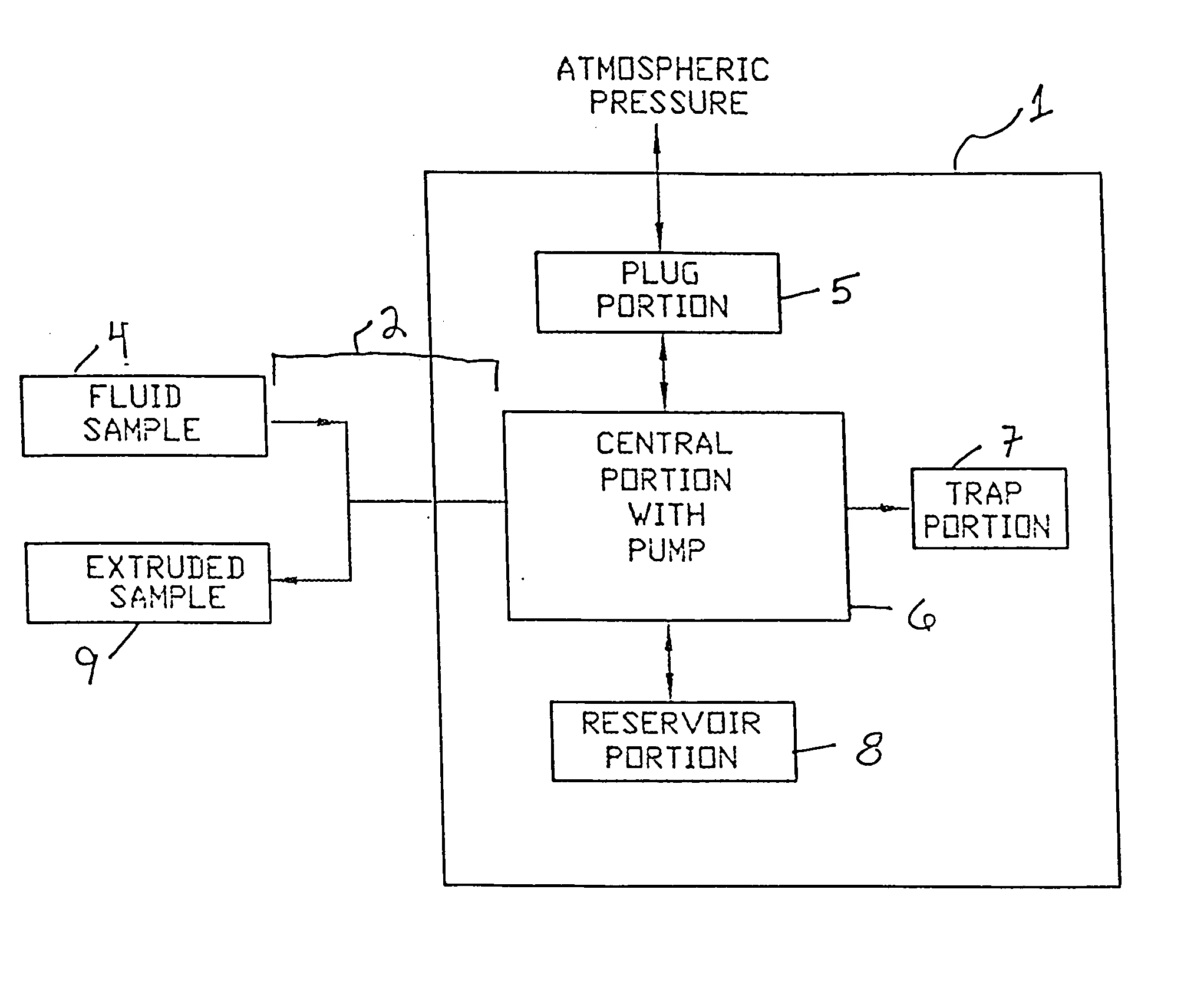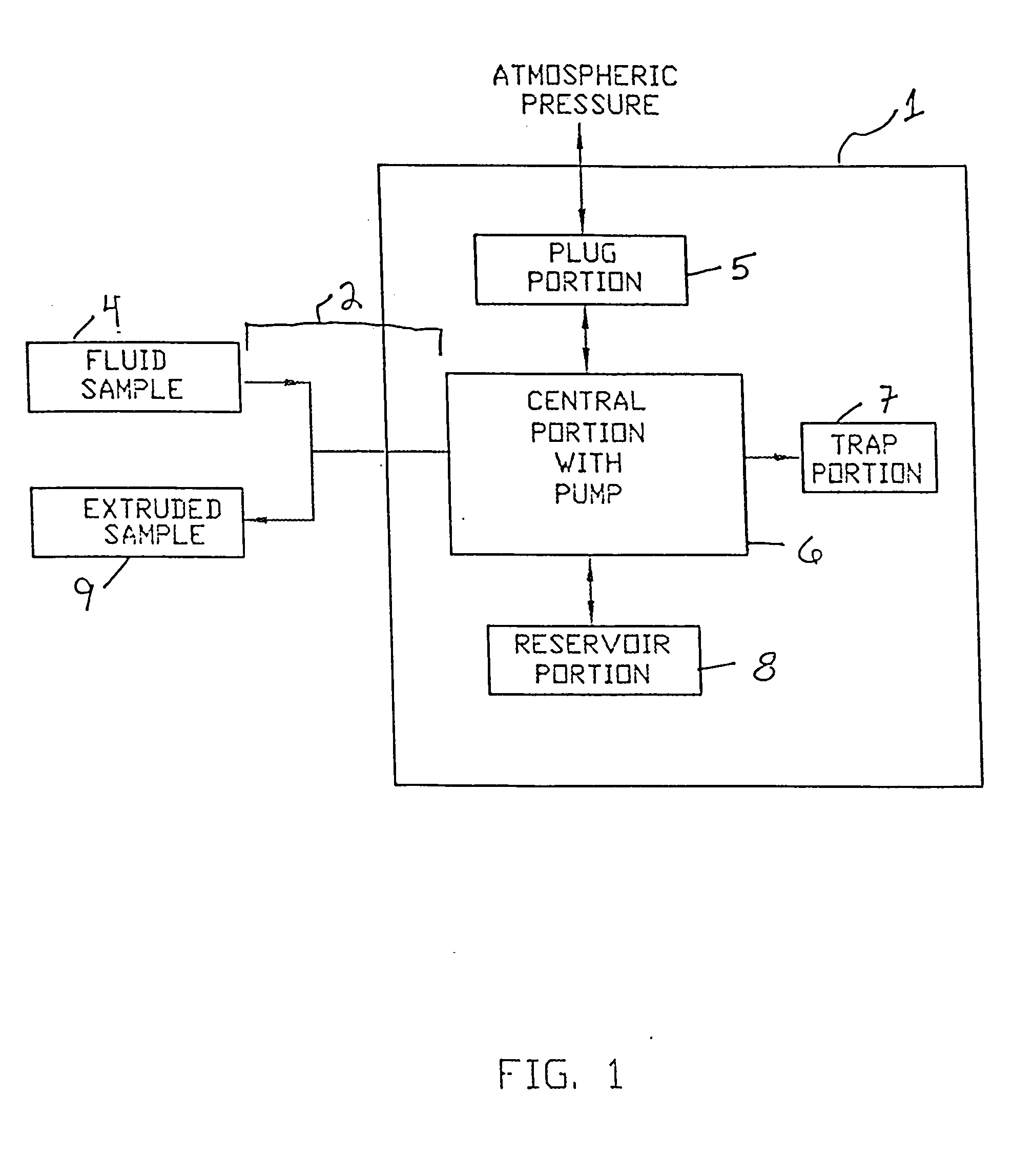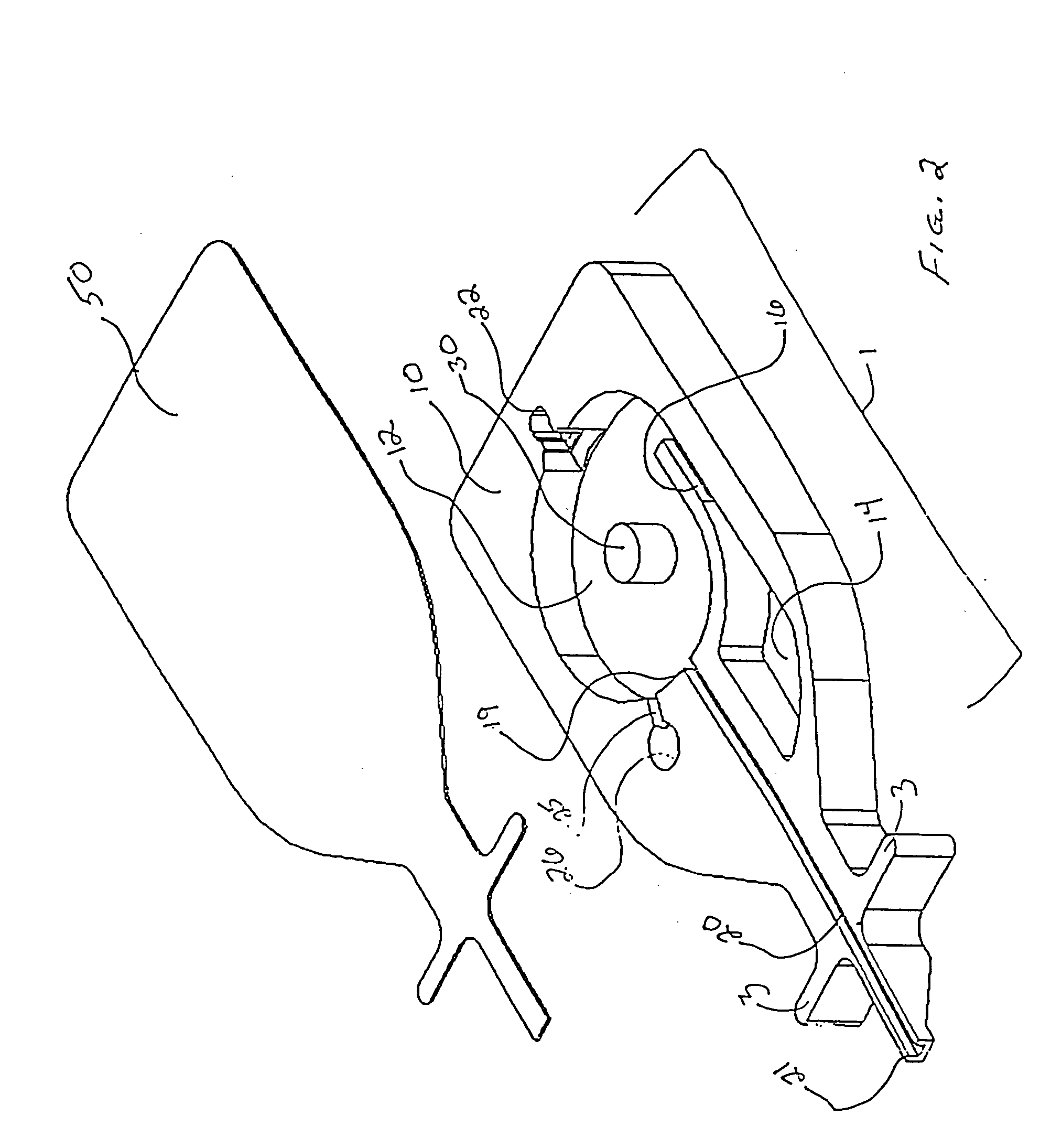Micro-volume blood sampling device
a blood sampling and micro-volume technology, applied in the field of obtaining a sample of biological fluid, can solve the problems of difficult task of obtaining a small fluid sample from an individual, for example 100 microliters (l) or less, and achieve the effect of minimizing the transmission of infection, simple manual discharge, and easy and rapid separation of components
- Summary
- Abstract
- Description
- Claims
- Application Information
AI Technical Summary
Benefits of technology
Problems solved by technology
Method used
Image
Examples
Embodiment Construction
[0021] The sample collection device of the invention includes generally a receptacle body portion 1, a conduit portion 2, and optionally, an attachment portion 3. FIG. 1 is a flow diagram illustrating the functional portions of the sample collection device of the invention. Fluid sample is drawn into the central portion 6 of receptacle portion 1 through conduit portion 2. Generally, central portion 6 includes functionally a space for collecting and mixing the fluid sample 4, and for actuating a mechanism for expelling extruded sample fluid 9 from the device, again via conduit portion 2. Plug portion 5 ensures that central portion 6 is at atmospheric pressure when fluid sample is being collected and drawn into the device, and ensures that central portion 6 is sealed off from atmospheric contact when fluid is being extruded from the device. Trap portion 7 functions as a region for sequestering components that are separated from the fluid sample during centrifugation of the device. Res...
PUM
| Property | Measurement | Unit |
|---|---|---|
| volume | aaaaa | aaaaa |
| volumes | aaaaa | aaaaa |
| diameter | aaaaa | aaaaa |
Abstract
Description
Claims
Application Information
 Login to View More
Login to View More - R&D
- Intellectual Property
- Life Sciences
- Materials
- Tech Scout
- Unparalleled Data Quality
- Higher Quality Content
- 60% Fewer Hallucinations
Browse by: Latest US Patents, China's latest patents, Technical Efficacy Thesaurus, Application Domain, Technology Topic, Popular Technical Reports.
© 2025 PatSnap. All rights reserved.Legal|Privacy policy|Modern Slavery Act Transparency Statement|Sitemap|About US| Contact US: help@patsnap.com



